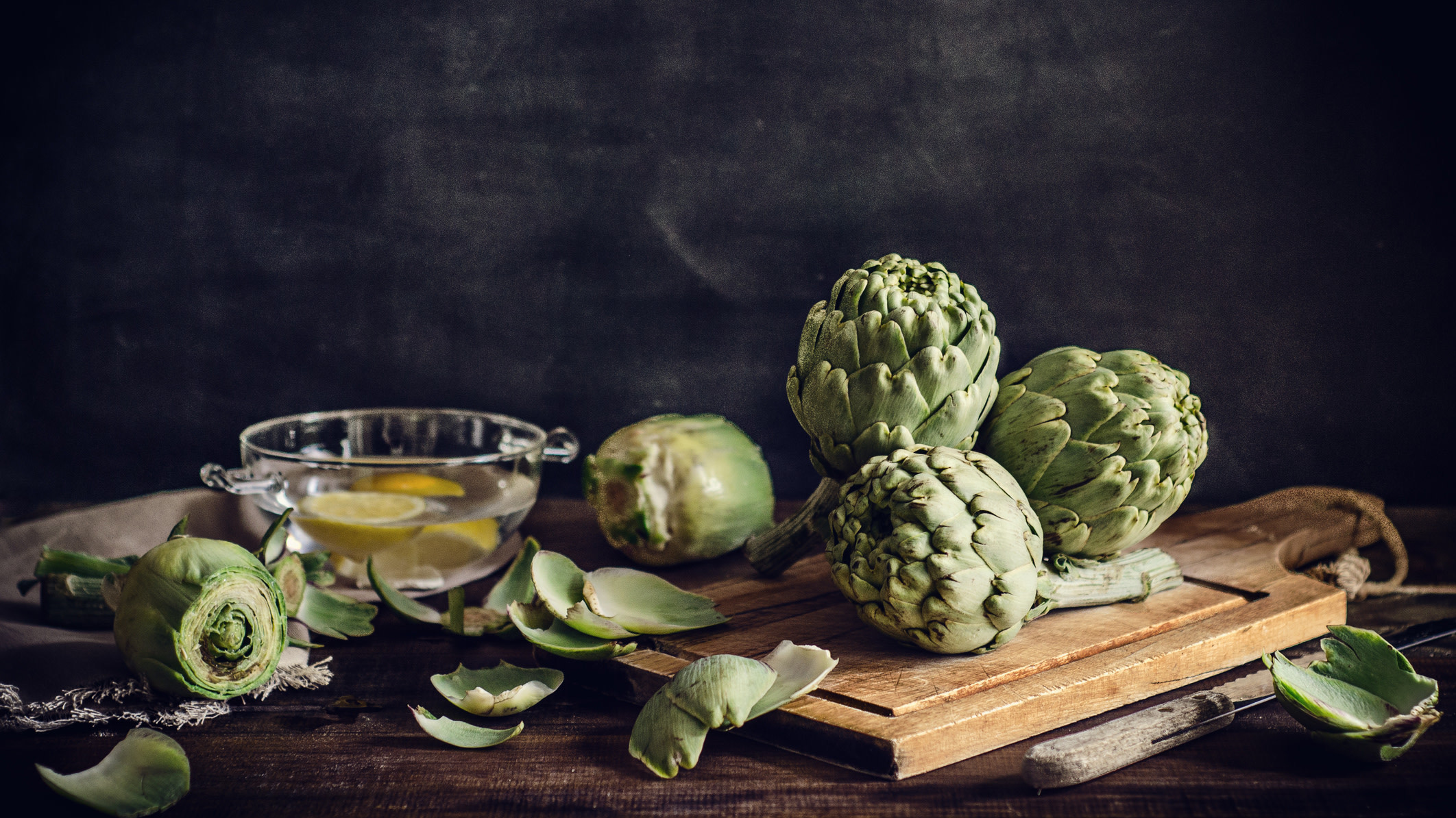How To Clean And Cook An Artichoke, A Surprisingly Simple Project With Huge Payoff
It's artichoke season now, and if you're like me, you've done your best to walk right past them at the grocery store. Until recently, I'm ashamed to say, I had never tried to clean a fresh artichoke. Not worth the effort, I would tell myself. In my world, artichokes would only come canned, and they would be used to round out pasta dishes or tossed carelessly into salads. Looking at fresh artichokes, I wouldn't know where to begin, and therefore I avoided them—that is, until the government bestowed upon me an abundance of enforced free time. With hours to burn, I decided that I would solve the puzzle of this curious thistle I so often ignored at the market. What I found is that there's a brand new dimension to uncover with a fresh and firm artichoke heart, and it's actually not a huge hassle to get there.
This was the video that changed my perception of cleaning artichokes.
It's surprisingly easy, and once I did it, right off the bat I noticed that the difference between fresh artichokes and canned artichokes is stark. They're totally different things, not even comparable. Canned artichokes can be a useful pantry item, sure, but they taste bitter and have a one-note, limp, frail consistency. The canning process robs them of their character, of their malleable texture.
But a freshly prepared bottom-half artichoke (part of the center, the heart, and the stem) has real star quality. It feels substantial. It has a tender, steak-like heartiness to it that benefits from gentler styles of cooking. The taste of the artichoke itself is mild, but braising imbues it with divine, flavorful liquid. An artichoke can be a delicious one-pot meal and deserves to be the center of your plate, at least while it's in season. One of my favorite things is cold, leftover pasta puttanesca. The tangy piquancy of the anchovies, the capers, the lemon—these are the sharp flavors I crave, and they only marinate over time. Here, I decided to braise fresh artichokes in a tart red sauce and serve it with pasta with the full intention of leaving a generous amount of leftovers for the next day.
My grocery store right now is barren. Garlic is consistently out. Onions are few, and what's left appear bruised and battered. (Somehow, there are shallots but no acceptable onions. Go figure.) This recipe reflects these limitations. The only reason I included the pasta was because I knew I'd have some artichoke sauce left over to work with. Pasta as an afterthought. Imagine that.
Braised Artichokes in Tart Tomato Sauce
- ¼ cup olive oil
- 1 medium shallot, diced
- 1 tsp. crushed red pepper
- 1 (28-oz.) can San Marzano tomatoes, crushed
- 1 oz. (or half a container) canned anchovies, chopped
- 4 Tbsp. capers, drained
- 1 tsp. fish sauce
- ¼ cup of water to thin out sauce
- 2 fresh artichokes
- Salt and freshly ground pepper to taste
- 2 Tbsp. fresh parsley, chopped
- 1 (1-lb.) package pasta
In a large saucepan or Dutch oven, heat the olive oil over medium heat. Add the shallots and sweat for a few minutes until translucent, then add the crushed red pepper. Stir for another minute. Add the crushed tomatoes. Next, toss in the anchovies, capers, fish sauce, and water. Stir while bringing heat up to medium-high. Once the sauce begins to simmer, bring it back down to medium heat. You want a gentle simmer going for at least 5 minutes before you throw in the artichokes, but if longer that's okay too. Just make sure you have your sauce ready to go before you start to clean the artichokes; it can always be thinned out with more water if it starts to get too thick.
Once the artichokes have been cleaned (top half discarded, stem peeled, fuzzy fibers and spiky purple leaves removed with a spoon), go ahead and throw them in a pot of salted boiling water. Cover the pot, turn the heat off, and let it sit for 15 minutes. The goal here is to steam them for a little bit to take some pressure off the braising process. It's an added step, sure, but I find that this helps create a thoroughly cooked 'choke.
Now you can add the artichokes to the tomato sauce. Turn the pepper mill a few times. Add the parsley. Cook for 15 minutes on one side, then flip the artichokes and cook for another 15. Remember, you're braising, so it's crucial to pour a spoonful of the tomato sauce onto the artichokes every few minutes to help cook the side that's not facedown in the pan. Tilt the pan toward you and spoon sauce over the artichokes.
When the artichokes are on their last 10 minutes of cooking, prepare your pasta according to the instructions on the package.
Once the artichokes are tender, remove them from the heat. Add the pasta to the tomato sauce pan. Swirl the pasta in the pan with the sauce and add a small ladle of pasta water, cooking for another minute, seasoning with salt and pepper. Serve the pasta and artichokes together as you please.
